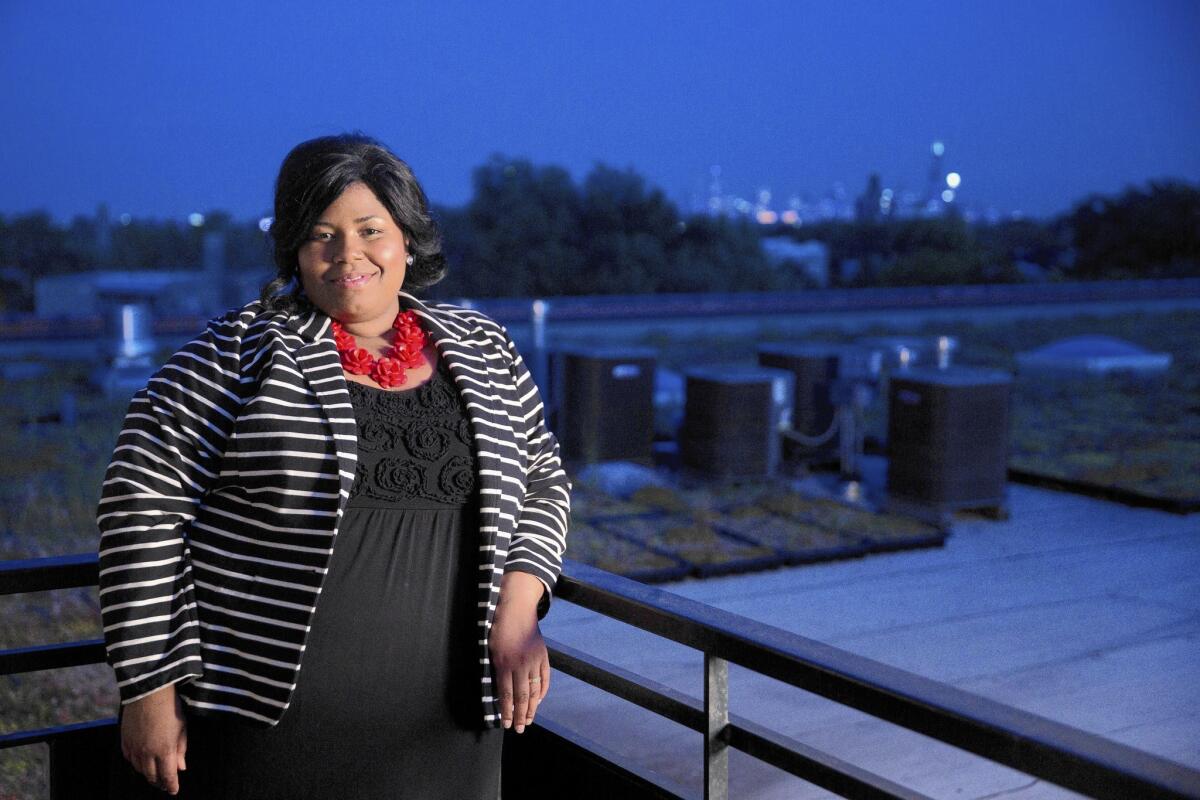A drop-off in start-ups: Where are all the entrepreneurs?

For years, Christina Marshall was convinced she would start her own company.
She studied entrepreneurship at USC’s business school with the hope of launching a clothing company for full-figured women. But after graduating two years ago, the 31-year-old chose a more conventional career as a brand manager at Kraft Foods in Chicago.
“It felt like the timing wasn’t exactly right,” Marshall said. “As much as I wanted to be an entrepreneur, I knew I needed a backup plan.”
The image of the U.S. as bursting with entrepreneurial zeal, it turns out, is more myth than reality. In truth, the rate at which new companies are being formed has fallen steadily for more than three decades.
The decline has occurred nationwide — even in Silicon Valley. Business creation there is still high compared with most of the country, but it’s down markedly from the past, according to the Brookings Institution.
“The first reaction of everyone who sees this is they can’t believe it, especially anyone from California,” said Bob Litan, a senior fellow at Brookings. “It’s down everywhere. In every locale. In every industry.”
The number of start-ups has fallen nearly 28% from 1977 to 2011, according to the Census Bureau. By other measures — as a share of all businesses or relative to the size of the working-age population — it has fallen in half.
Many factors appear to be contributing to the trend, including increased risk aversion among workers, shifts in government regulation and a consolidation in corporate America that has left many industries dominated by a handful of behemoths.
The drop has been sharpest among the millennial generation, which is grappling with heavy student debt and a frustrating job market, according to research by Robert Fairlie, an economist at UC Santa Cruz.
People ages 20 to 34 created 22.7% of all new companies last year, down from 34.8% in 1996.
“The popular image of every millennial starting a company, like every popular stereotype, is overblown,” said Dane Stangler, research director at the Ewing Marion Kauffman Foundation, a Kansas City, Mo., nonprofit.
Falling entrepreneurship is bad for the economy. It means fewer jobs being created and a reduction in innovation that is essential to economic growth and rising living standards.
“When you see the kind of drop-off in starting up new businesses we’ve seen, that’s going to have a really large effect on the employment numbers,” said Barry Lynn, senior fellow at the New America Foundation.
Some experts said the picture isn’t as bleak as the numbers suggest.
Enrollment in college entrepreneurship programs is strong, and some surveys show many millennials plan to start businesses eventually.
Marshall, for one, still dreams of starting a business, but probably when she can meet such challenges as the upfront costs and the need to support her family.
“I still feel like it’s a calling I need to fulfill and I’m not completely satisfied,” she said.
Some experts said government statistics fail to capture all of the entrepreneurial activity. They think business formation has picked up as the economy has improved in the last two years.
“Everybody I know is working on an app or a start-up of some type,” said David Belasco, co-director of the Lloyd Greif Center for Entrepreneurial Studies at USC’s Marshall School of Business.
“I went to dinner last night and three people leaned over and said, ‘Here’s what I’m working on,’ and gave me demos of their products in the restaurant,” he said.
The prime age for entrepreneurship is late 30s to early 40s, suggesting that a burst of activity may lie ahead as the huge millennial generation reaches that age range.
“Maybe we’re just in this demographic lull,” Stangler said. “Maybe we’re looking at another boom in five to 10 years.”
For baby boomers, business formation has accelerated. People ages 55 to 64 started 23.4% of new companies in 2013, up from 14.3% in 1996, according to Fairlie. Part of that stems from some older workers going out on their own after being laid off and unable to find suitable work.
“Seniors understand that if they’re out of work their chances of getting a job again are abysmal, absolutely abysmal,” said Elizabeth Isele, president of Senior Entrepreneurship Works, a nonprofit that helps older workers launch companies.
Still, a range of data underscores the decrease in entrepreneurial activity.
Measured relative to the size of the working-age population, the number of start-ups dropped 53% from 1977 to 2010, according to the New America Foundation.
The Census Bureau has found that only 8.2% of U.S. companies in 2011 were start-ups, defined as less than a year old, down from 16.5% in 1977.
Entrepreneurial zest has fallen even in Silicon Valley.
From 2009 to 2011, about 8% of companies in the San Francisco and San Jose areas were start-ups, according to Brookings. While that’s higher than in most regions of the country, each rate was roughly half the level of 1978 to 1980.
There is no consensus about the precise causes of falling entrepreneurship, but experts cite several factors.
Government policies, such as weakened enforcement of antitrust laws starting in the Reagan administration, have spurred industrial consolidation that has resulted in the emergence of older and larger companies, experts said.
For example, businesses in existence for 16 years or more constituted 34% of all companies in 2011, up from 23% in 1992, according to Brookings. They employ 72% of the private-sector workforce, up from 60%.
Potential start-ups are wary of taking on giant rivals, said Lina Khan, a fellow at the New America Foundation.
“You don’t really see newcomers saying, ‘Let me open a bookstore to compete with Amazon or an independent pharmacy to compete with CVS,’” Khan said.
Some experts said entrepreneurship has been hurt by a societal tilt toward risk aversion brought on partly by a sluggish job market and high student debt.
Those factors coaxed Anna Baxter to opt against an entrepreneurial path after graduating from UCLA’s Anderson School of Management last year.
Baxter, 36, won a prestigious award at Anderson for co-founding a company that rents gowns for bridesmaids. The company got venture capital funding and had encouraging prospects.
But Baxter took a job at tech giant Adobe Systems Inc. to help pay $110,000 in student loans. Her co-founder, who stuck with the company, had no debt, Baxter said.
“A lot of my classmates upon graduation didn’t have jobs. Having a secure job with a really good salary was something to be considered carefully,” Baxter said. “I definitely went down the path in my head of ‘OK, what happens if this fails in six months? How hard is it going to be for me to find a job?’”
The lure of stability also appealed to Marshall.
The Georgia native went to business school at USC to learn how to start a business. She said she got positive feedback on her designs for upscale clothes for full-figured women.
But her plans were thrown off by the untimely deaths of several relatives, as well as by the need to support her fiance and his 9-year-old son.
“It made me take a step back and think whether I was ready to embrace the instability of being an entrepreneur right away,” Marshall said. “To really dive in head first is at least a couple more years down the road.”
More to Read
Inside the business of entertainment
The Wide Shot brings you news, analysis and insights on everything from streaming wars to production — and what it all means for the future.
You may occasionally receive promotional content from the Los Angeles Times.










